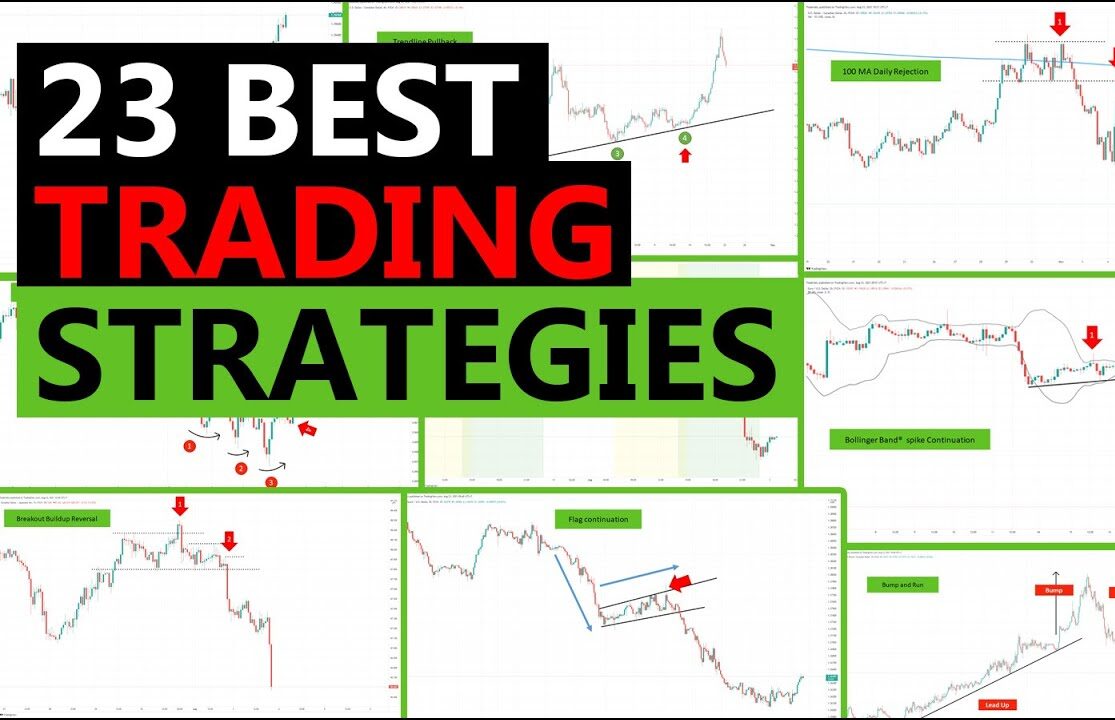Day trading strategies for forex involve the purchase and sale of foreign currency pairs within a single trading day. This approach requires a solid understanding of both the forex market and the unique day trading strategies that can help increase profitability and manage risk. This guide dives into key strategies, essential trading tools, and tips for success in day trading forex.
What Is Forex Day Trading?
Forex day trading is a strategy in which traders seek to benefit from price fluctuations within the same trading day. Unlike swing or position traders who hold assets for extended periods, day traders close all positions before the day’s end, avoiding overnight risks and adapting quickly to market changes. Day trading strategies for forex typically focus on high liquidity pairs, such as EUR/USD, GBP/USD, and USD/JPY, which tend to have higher trading volumes and tighter spreads.
Why Day Trading in Forex?
- Increased Liquidity: Forex markets are open 24 hours a day, 5 days a week, allowing traders to find ample trading opportunities within a single day.
- Reduced Overnight Risk: By closing trades daily, day traders avoid unpredictable overnight events that could lead to sudden losses.
- Potentially High Profits: With the right day trading strategies, it is possible to capitalize on small but frequent price movements.
Outlink: Learn more about the basics of forex trading.
The Top Forex Day Trading Strategies for Beginners
Forex day trading strategies often rely on technical analysis and specific trading indicators. Here are three of the most popular approaches for beginners:
Trend Following Strategy
The trend-following strategy relies on identifying and trading in the direction of current market trends. Traders use indicators like moving averages and relative strength index (RSI) to determine the market’s direction. By following established trends, day traders can reduce the risk of countertrend trades, which are more complex and can carry more risk.
Breakout Strategy
A breakout strategy focuses on identifying price levels where a currency pair breaks out of established support or resistance levels. Breakouts usually signal strong price movement in one direction, providing an opportunity to enter early on a trend. Many day traders use Bollinger Bands to identify breakout points.
Scalping
Scalping involves making numerous small trades within minutes or even seconds. Scalpers look to profit from small price changes while minimizing risk exposure by spending minimal time in the market. The scalping strategy works best during high-volume sessions, such as the overlap between the London and New York sessions.
Key Tools and Indicators for Forex Day Trading
To succeed with day trading strategies for forex, it’s essential to use the right tools and indicators. Here are three critical tools for improving trading accuracy:
Moving Averages
Moving averages smooth price data to create a trend-following indicator that day traders use to understand market trends. The two main types are the simple moving average (SMA) and the exponential moving average (EMA). Many traders rely on the 50-day and 200-day SMAs to make trading decisions, while the 9-day and 21-day EMAs are popular for shorter-term trades.
Relative Strength Index (RSI)
The RSI is a momentum oscillator that measures the speed and change of price movements. An RSI above 70 often signals that a currency is overbought, while an RSI below 30 indicates an oversold condition. Traders can use these levels to predict price reversals or continue trends within their day trading sessions.
Fibonacci Retracement Levels
The Fibonacci retracement tool helps traders identify potential reversal levels by dividing the previous price range using the Fibonacci sequence. This tool is particularly useful for day trading strategies where traders seek precise entry and exit points, minimizing risk.
Risk Management in Forex Day Trading
Risk management is crucial for success in forex day trading. Here are some practical strategies to protect your investments:
Position Sizing
Position sizing involves determining how much of your trading capital to allocate to each trade. A general rule is to risk no more than 1-2% of your total capital on a single trade, regardless of its potential return. This approach reduces the impact of individual losses on your portfolio.
Stop-Loss and Take-Profit Orders
Stop-loss orders allow you to exit trades automatically when a specific price level is reached, reducing the risk of unexpected losses. Take-profit orders, on the other hand, lock in profits once a target level is reached, helping you avoid the temptation of holding onto a trade for too long.
Using Leverage Wisely
Leverage can amplify profits but also increase losses. Forex brokers offer varying leverage levels, from 1:30 to as high as 1:500, depending on regulations. For day trading, it’s best to use leverage conservatively, focusing on maximizing your returns without exposing yourself to excessive risk.
Planning Your Forex Day Trading Routine
A solid day trading routine enhances decision-making and helps avoid emotional trading. Here are some tips for creating a successful trading routine:
Choose Your Trading Hours
Forex markets are open 24 hours, but certain hours are more volatile and offer better trading opportunities. The London-New York overlap, for example, sees the most volume and price action, making it an ideal time for day trading. Consider aligning your trading hours with the currency pairs you’re trading.
Practice Consistent Strategy Review
Evaluate your day trading strategies regularly to see what’s working and what isn’t. Tracking your trades in a journal and reviewing results weekly can help you refine your approach.
Set Realistic Goals
Setting achievable daily goals, whether in terms of pips or percentage return, will help you stay disciplined and avoid overtrading. Remember, consistent small gains are more sustainable than occasional large wins.
Common Mistakes to Avoid in Forex Day Trading
Learning from common mistakes can save new traders both time and money. Here are some errors to watch out for:
Overtrading
Entering too many trades in a single day can lead to higher transaction costs and increased exposure to risk. Day traders should stick to their pre-determined strategy and avoid impulsive trades that aren’t based on thorough analysis.
Failing to Use Stop-Loss Orders
Avoiding stop-loss orders is a mistake many new traders make. Without them, you risk holding onto losing positions longer than intended. Proper risk management is essential for long-term success.
Ignoring Economic News
Forex day trading is sensitive to global economic news, which can cause sudden market shifts. Always check the economic calendar for key data releases, such as central bank announcements, employment reports, and GDP data, before starting your trading session.
Conclusion
Day trading forex offers lucrative opportunities, but it requires a solid understanding of day trading strategies for forex, discipline, and effective risk management. By mastering trend-following, breakout, and scalping strategies and using tools like moving averages and Fibonacci retracements, you can improve your decision-making and increase your chances of success. Always approach forex trading with caution, setting realistic goals, managing risk effectively, and avoiding common pitfalls.




